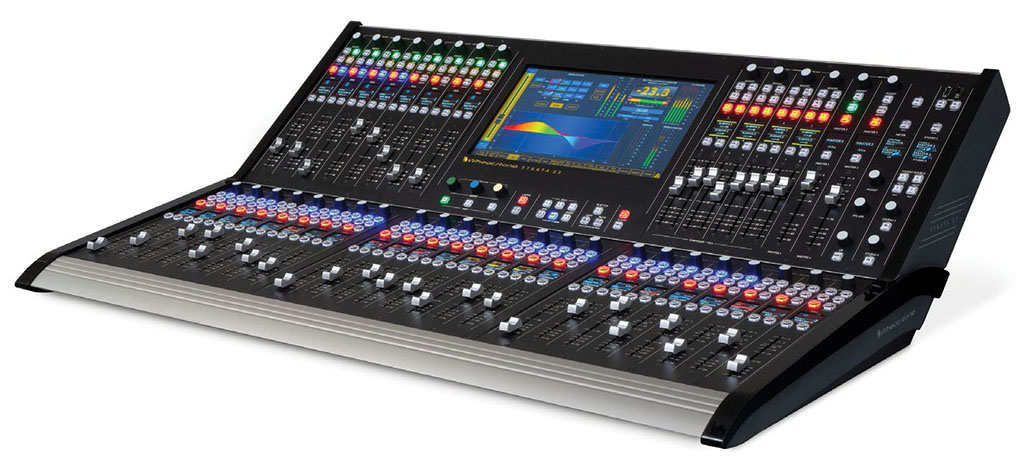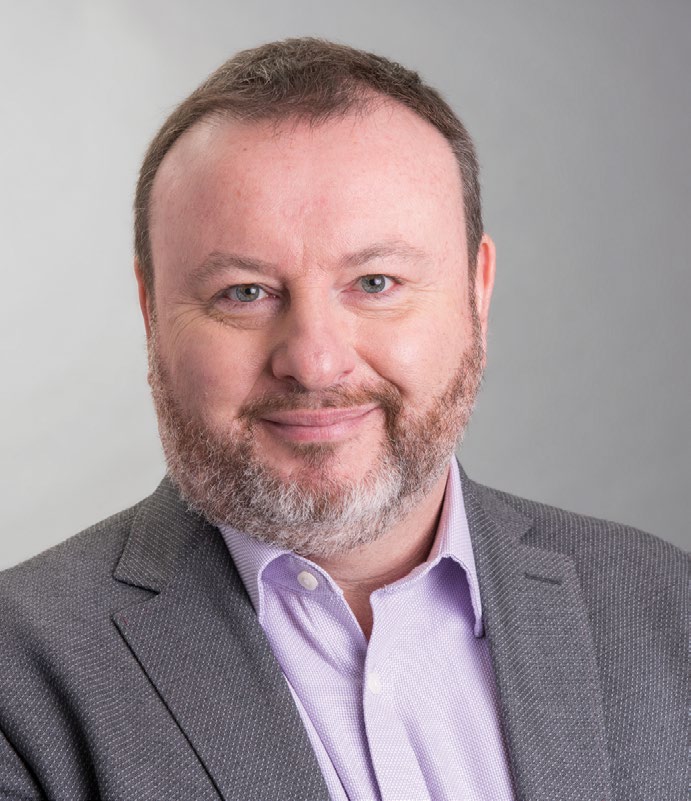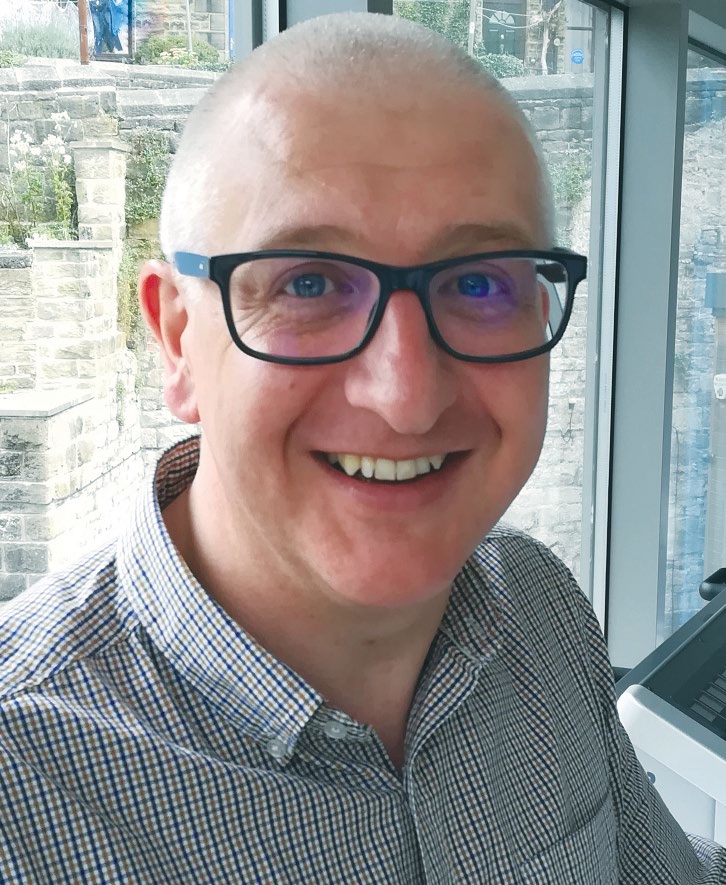Audio Boards Play Nice With AES67
LOS ANGELES—With the growing adoption of IP networking in broadcast facilities and the downward pressure on production budgets, audio mixing consoles are entering a new era, one in which the board may be out of sight—indeed, miles and miles away—and may have no faders, or even an operator.

So what do customers now expect of mixing product manufacturers, and what is the likely next step in the evolution of the broadcast console?
“It seems like consoles have to do everything and cost half as much as they used to, these days,” says Wheatstone Senior Sales Engineer Phil Owens, who adds that U.S. stations essentially fall into three categories. Typically, the station needs a board that addresses the needs of the board ops, or they have some dayparts manned and others automated, or the station is fully automated.
“For the U.S. market in particular, a console has to be easy to drive,” he says, with a relatively simple first-layer user interface. “But maybe the layer just below the simple user interface gives you all the tools that an audio hotshot would want. The consoles that I’m primarily talking about are [Wheatstone’s] Strata 32 and the IP64—they share these same characteristics.”
STANDARD LIMITATIONS
On the topic of networking, Owens adds, “There are the SMPTE ST 2110 standards that will ultimately be embraced by pretty much everybody, so any board these days has to play nice with AES67, because AES67 is the transport stream for 2110.”
But Owens also predicts that AES67 will never reach the point where it can provide the necessary transport discovery, control, and logic that a proprietary network does, although NMOS will make connection management easier. Systems will always need to be able to interoperate with third-party devices via AES67, he says, noting that the company’s WheatNet-IP network handles the AES standard.
The professional video industry's #1 source for news, trends and product and tech information. Sign up below.

“But AES67 will never be the glue that holds the whole infrastructure system together,” he says. “That will always be a proprietary network.”
Many of IP’s benefits are currently more obvious on the video side of things. “Where you interface with products that are being made by a company in the video space, that’s where AES67 and 2110 tend to come in, said Martin Dyster, vice president, business development-TV, TV Solutions Group for the Telos Alliance. “Then when you’re connecting to products from other audio companies around the control room and the studio floor, that might be where you see Dante more.”
While more prevalent in radio facilities, Telos recently launched a new console—Quasar—for its Axia product range that is attracting attention in TV markets, Dyster reports. The entire Axia range, in common with all brands under the Telos umbrella, are fully AES67 compliant, he notes. Indeed, the AES standard evolved out of the company’s Livewire protocol, introduced in 1999, and RAVENNA.
Telos was involved with Notre Dame’s Martin Media Center, one of the first all-IP facilities to be built, where Axia Fusion consoles are handling TV production, with an Axia backbone connecting over AES67 to an Evertz EQX routing system. Livewire+AES67 connects the various campuses, alongside video-over-IP. “So we can stay pretty much native, and with Dante now embracing AES67 and our ability to connect to that, using SIP discovery and advertisement, that puts our products in a very strong place that I think is probably a little bit unique,” says Dyster.
CONSOLE VIRTUALIZATION

Customers are generally either happy with their present Calrec Hydra2 network, or are taking a gateway or hybrid approach, integrating Hydra2 with islands of IP to overcome the limitations of baseband, or simply familiarize themselves with IP technology, observes Dave Letson, vice president of sales for Calrec.
“We have about 10 installations where there is a Hydra2 console with our AoIP gateway unit connecting it to a 2110 environment,” he said. ‘They’ve got the best of both worlds. We’re able to maximize all the resources from a router or from the video architecture into the [Calrec] audio network.”
In addition to driving the use of REMI or at-home remote production workflows, AoIP has enabled “console virtualization,” which, hand-in-hand with a general desire to reduce production budgets, is beginning to enjoy more widespread adoption.
“I’ve been to a lot of facilities in the last 12 months where a physical surface was not required or was gathering dust because everything is either virtualized or is being driven from the vision switcher,” says Dyster. “I see that model now all the time, particularly in the U.S., at news affiliates, where you don’t see a physical console.”
Letson reports that one U.S. broadcaster is using Calrec’s Type R as a virtualized solution, with no control surface, connecting it to the station’s automation system at a fully-IP central hub. Calrec’s RP1 remote production unit supports the creation of local IFBs at a remote studio.
“That’s an interesting workflow, because you’ve got two sides of the virtual world,” Letson said. “We never saw those products working alongside each other for local news, but for that customer it works really well. It’s great for a local news production environment because they get to reduce some of the key staff. Some of the key staff are aging out, so you don’t have the same level of staffing that you used to have.”
Owens is seeing similar workflows in more localized situations, where two or more call-letter stations share a building with separate control rooms but a single set.
“Instead of having a standalone audio board you have a networked appliance that is fully routable,” Owens said. “At 5:00 you can route all the ABC sources into it and at 6:00 you can route the CBS sources into it. Either control room may need to grab certain shared resources, so the network aspect of the new consoles becomes more important,” says Owens.
The next step in console evolution is likely to encompass features for immersive audio production. Broadcasters are currently using 5.1 consoles for immersive productions, but, says Letson, the logical next step is to develop new metering, monitoring and other functionality.
But with so many immersive standards in play worldwide, from 5.1.4 to 22.2, anyone providing an international mix will need to generate multiple deliverables. “I think that’s where the tools will have to go next on consoles,” says Letson. “That’s part of where we are with ImPulse,” Calrec’s new processing core. “It will have those tools built-in.”
Steve Harvey began writing for Pro Sound News and Surround Professional in 2000 and is currently senior content producer for Mix and a contributor to TV Tech. He has worked in the pro audio industry—as a touring musician, in live production, installed sound, and equipment sales and marketing—since November 1980.
